Name of cholesterol blood test. Lipid Panel Cholesterol Test: Understanding Ranges, Procedure, and Results
What is a complete cholesterol test. How often should you get your cholesterol checked. What do the different cholesterol levels mean. Why is cholesterol testing important. How accurate are cholesterol test results.
What is a Lipid Panel Cholesterol Test?
A lipid panel cholesterol test, also known as a complete cholesterol test or lipid profile, is a comprehensive blood test that measures various types of fats (lipids) in your blood. This test is crucial for assessing your risk of heart disease, stroke, and other cardiovascular conditions.
The lipid panel typically measures:
- High-density lipoprotein (HDL) cholesterol – often called “good” cholesterol
- Low-density lipoprotein (LDL) cholesterol – often referred to as “bad” cholesterol
- Triglycerides
- Total cholesterol
In some cases, the test may also calculate very low-density lipoprotein (VLDL) cholesterol levels, though this is not directly measured.
Why is Cholesterol Testing Important?
Cholesterol testing is vital for several reasons:

- It helps assess your risk of cardiovascular diseases
- It can identify potential health issues before they become serious
- It allows for early intervention and treatment if necessary
- It helps monitor the effectiveness of lifestyle changes or medications
Cholesterol is essential for various bodily functions, including hormone production and cell membrane formation. However, excessive cholesterol can lead to plaque buildup in arteries, increasing the risk of heart disease, stroke, and atherosclerosis.
Recommended Frequency of Cholesterol Testing
How often should you get your cholesterol checked? The Centers for Disease Control and Prevention (CDC) provides the following guidelines:
- Healthy adults: Every 4 to 6 years
- Children and adolescents: Once between ages 9-11, and again between 17-21
- Adults with risk factors: More frequent testing may be necessary
Risk factors that may require more frequent testing include:
- Family history of high cholesterol or heart disease
- Obesity
- Smoking
- Sedentary lifestyle
- Diabetes
- Kidney disease
- Polycystic ovary syndrome
- Underactive thyroid
Understanding Cholesterol Test Results
Cholesterol levels are measured in milligrams per deciliter (mg/dL) of blood. Ideal results for most adults are:
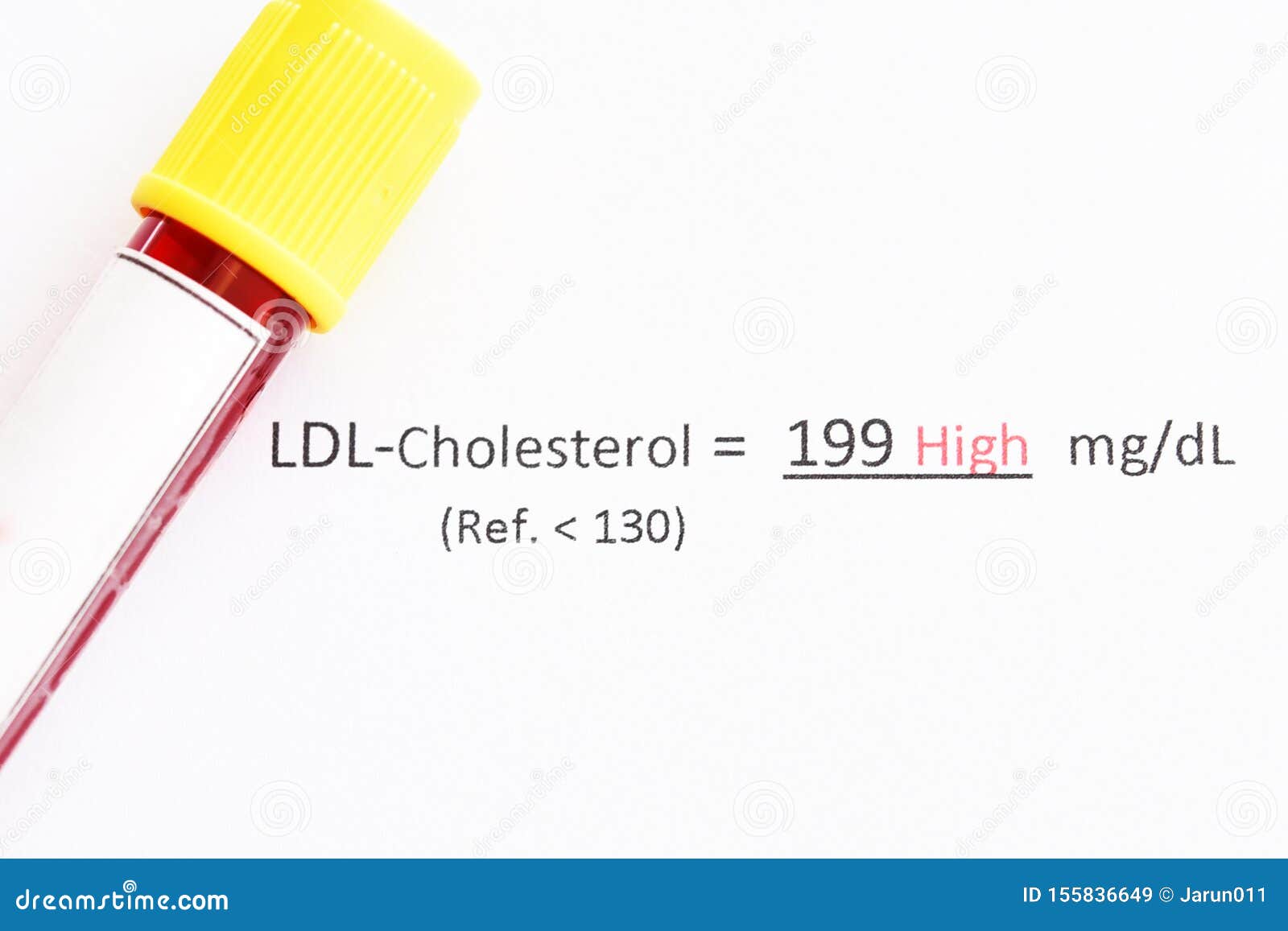
- LDL cholesterol: Less than 100 mg/dL
- HDL cholesterol: 40 to 60 mg/dL (higher is better)
- Total cholesterol: Less than 200 mg/dL
- Triglycerides: Less than 150 mg/dL
- VLDL cholesterol: Under 30 mg/dL
It’s important to note that these are general guidelines. Your doctor will interpret your results considering other factors such as age, gender, family history, and overall health.
The Cholesterol Testing Procedure
The cholesterol testing procedure is relatively simple and straightforward:
- A healthcare professional will draw a small blood sample from your arm
- The sample is sent to a laboratory for analysis
- Results are typically available within a few days
In some cases, your doctor may request that you fast for 9-12 hours before the test. However, recent guidelines suggest that non-fasting tests can accurately detect high cholesterol in adults over 20 who aren’t taking cholesterol-lowering medications.
Factors Affecting Cholesterol Test Accuracy
While cholesterol tests are generally reliable, several factors can affect their accuracy:

- Improper fasting (if fasting is required)
- Certain medications
- Human error in sample collection or analysis
- Recent illness or stress
- Pregnancy
For more accurate results, doctors often recommend testing both HDL and LDL levels rather than LDL alone. If your results seem unusual, your doctor may recommend retesting or additional tests to confirm the findings.
Interpreting High Cholesterol Results
If your cholesterol test results are outside the normal range, it doesn’t necessarily mean you have a health problem. Your doctor will consider various factors when interpreting your results, including:
- Your age and gender
- Your family history
- Your weight and body mass index (BMI)
- Your diet and exercise habits
- Other health conditions you may have
- Your smoking status
Based on these factors and your test results, your doctor may recommend lifestyle changes, medications, or further testing. For instance, they might order a blood glucose test to check for diabetes or a thyroid function test if they suspect an underactive thyroid.

Managing Cholesterol Levels
If your cholesterol levels are high, there are several strategies you can employ to bring them back to a healthy range:
- Adopt a heart-healthy diet low in saturated and trans fats
- Increase physical activity
- Maintain a healthy weight
- Quit smoking
- Limit alcohol consumption
- Take cholesterol-lowering medications as prescribed by your doctor
Regular cholesterol testing can help you and your healthcare provider monitor the effectiveness of these interventions and adjust your treatment plan as needed.
Diet and Cholesterol
Diet plays a crucial role in managing cholesterol levels. Foods that can help lower cholesterol include:
- Oats and other whole grains
- Fatty fish like salmon and mackerel
- Nuts and seeds
- Avocados
- Olive oil
- Beans and legumes
- Fruits and vegetables
Conversely, foods high in saturated and trans fats can raise cholesterol levels and should be limited. These include:
- Red meat
- Full-fat dairy products
- Fried foods
- Baked goods made with hydrogenated oils
Exercise and Cholesterol
Regular physical activity can help improve your cholesterol profile by:

- Increasing HDL cholesterol levels
- Reducing LDL cholesterol and triglycerides
- Helping maintain a healthy weight
- Improving overall cardiovascular health
The American Heart Association recommends at least 150 minutes of moderate-intensity aerobic exercise or 75 minutes of vigorous-intensity aerobic exercise per week for adults.
Advances in Cholesterol Testing
While the standard lipid panel remains the most common cholesterol test, researchers are continually working on new methods to assess cardiovascular risk more accurately. Some recent advances include:
- Advanced lipoprotein testing: This measures the size and number of lipoprotein particles, providing a more detailed picture of cholesterol distribution in the blood.
- Apolipoprotein B (ApoB) testing: ApoB is a protein found in LDL and VLDL particles. Some researchers believe ApoB levels may be a better predictor of heart disease risk than LDL cholesterol alone.
- Genetic testing: Certain genetic variations can affect cholesterol metabolism. Genetic tests can help identify individuals at higher risk of inherited high cholesterol conditions.
These advanced tests are not routinely used but may be recommended in specific cases, such as for individuals with a family history of early heart disease or those with unusual lipid profiles.
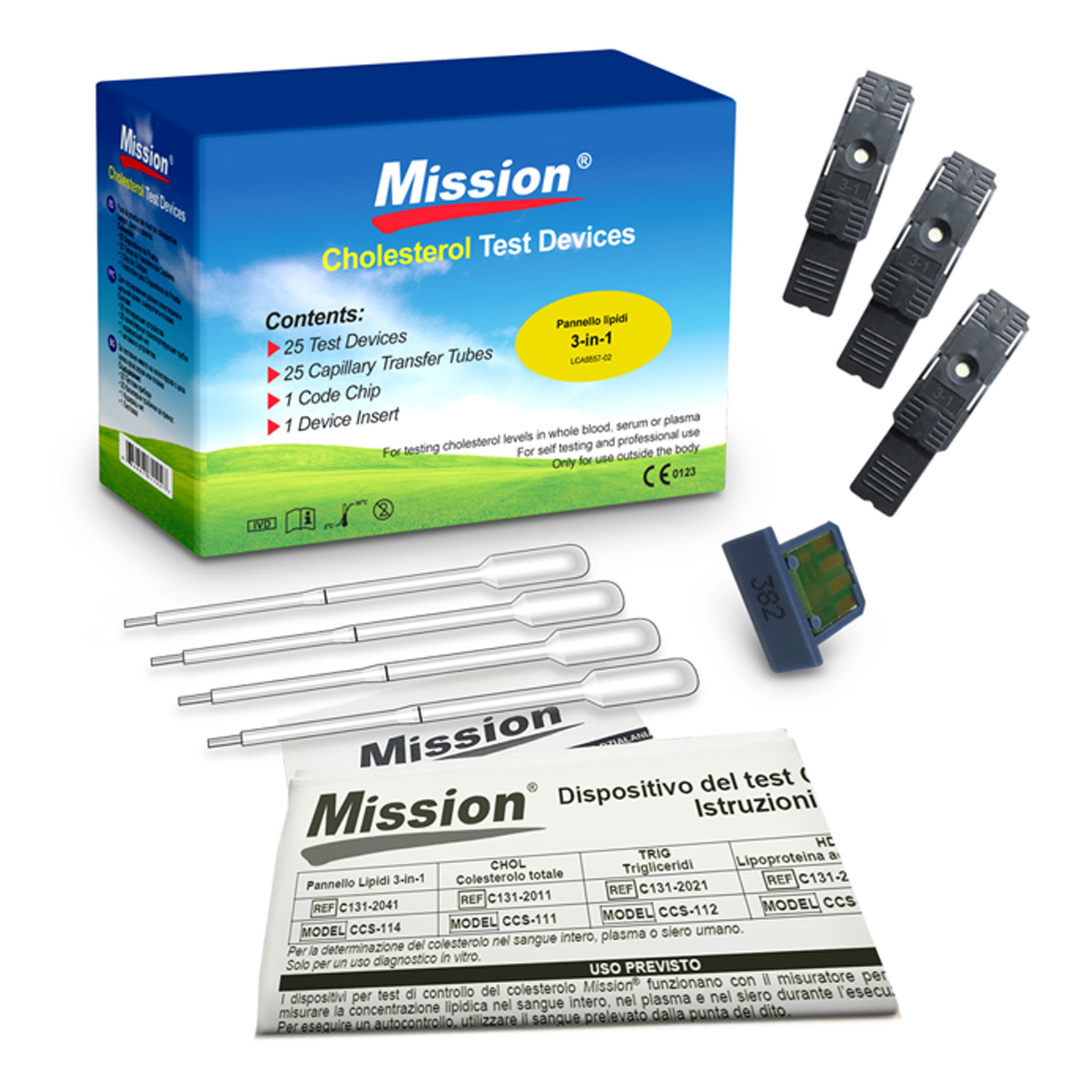
The Future of Cholesterol Management
As our understanding of cholesterol and its role in cardiovascular health evolves, so do the strategies for managing it. Some promising areas of research include:
- Personalized medicine approaches based on genetic profiles
- New classes of cholesterol-lowering medications
- Improved risk assessment tools that incorporate multiple factors beyond just cholesterol levels
- Lifestyle interventions tailored to individual metabolic profiles
These advancements may lead to more effective prevention and treatment strategies for cardiovascular diseases in the future.
The Importance of Regular Health Check-ups
While cholesterol testing is crucial, it’s just one part of maintaining overall health. Regular health check-ups can help detect a wide range of potential issues early, including:
- High blood pressure
- Diabetes
- Thyroid disorders
- Certain cancers
By combining regular cholesterol testing with other preventive health measures, you can take a proactive approach to your health and reduce your risk of various chronic diseases.

Creating a Health Maintenance Plan
Working with your healthcare provider, you can create a personalized health maintenance plan that includes:
- Regular cholesterol testing and other appropriate screenings
- A balanced diet and exercise regimen
- Stress management techniques
- Smoking cessation support if needed
- Medication management if prescribed
This holistic approach to health can help you maintain optimal cholesterol levels and overall well-being.
Empowering Yourself with Knowledge
Understanding your cholesterol levels and what they mean is an important step in taking control of your health. By staying informed about cholesterol testing, interpreting your results, and implementing lifestyle changes when necessary, you can significantly reduce your risk of cardiovascular diseases.
Remember, while cholesterol testing is important, it’s just one piece of the puzzle. A healthy lifestyle that includes a balanced diet, regular exercise, stress management, and avoidance of harmful habits like smoking is key to maintaining not just healthy cholesterol levels, but overall cardiovascular health.
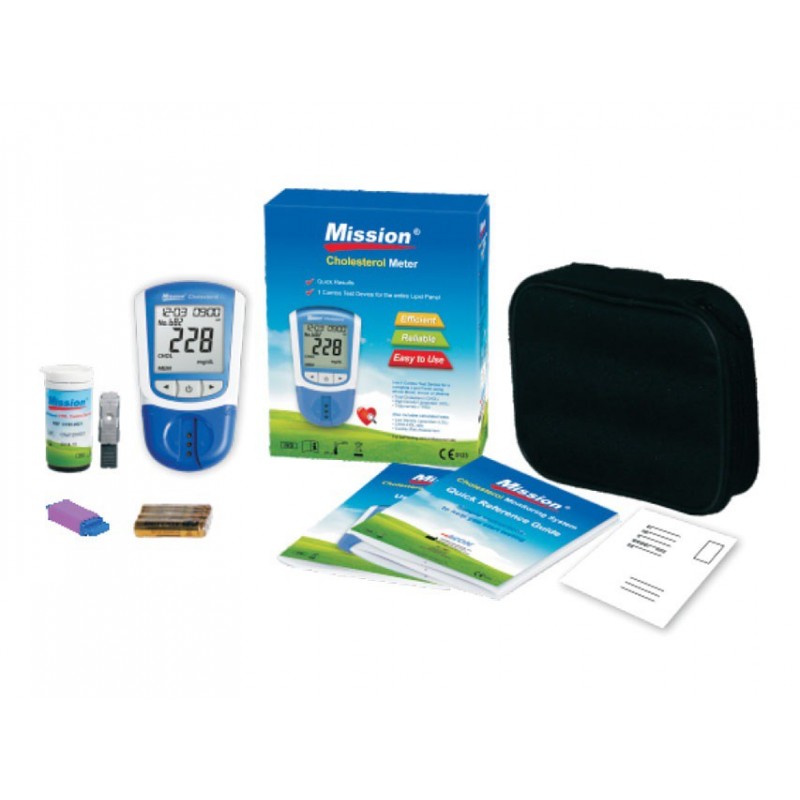
If you have concerns about your cholesterol levels or cardiovascular health, don’t hesitate to speak with your healthcare provider. They can provide personalized advice and recommendations based on your individual health profile and risk factors.
By taking an active role in managing your cholesterol levels and overall health, you’re investing in a healthier, more vibrant future. Regular cholesterol testing, combined with a heart-healthy lifestyle, can help you stay on track and catch any potential issues early, when they’re most treatable.
Lipid Panel Cholesterol Test: Ranges, Procedure, and Results
A complete cholesterol test measures levels of cholesterol and other fats in your blood. The CDC recommends testing every 4 to 6 years for healthy adults. People with a family history of high cholesterol or other risk factors may need to be tested more often.
Cholesterol is a waxy substance your body needs to produce certain hormones and to build the outer membrane of every cell. Although a certain level of cholesterol is essential, too much of it can build up in your blood vessels and raise your risk of:
- heart disease
- stroke
- atherosclerosis, a clogging or hardening of your arteries
The Centers for Disease Control and Prevention (CDC) recommends beginning cholesterol testing in childhood or adolescence and getting retested at least every 5 years after the age of 20.
A complete cholesterol test, also called a lipid panel or lipid profile, measures the levels of lipids, or fats, in your blood. It primarily measures your:
It primarily measures your:
- High-density lipoprotein (HDL) cholesterol. HDL cholesterol is referred to as “good” cholesterol because it helps remove LDL cholesterol from your blood.
- Low-density lipoprotein (LDL) cholesterol. LDL cholesterol is referred to as “bad” cholesterol. Too much of it can cause cholesterol to build up on the walls of your arteries. This raises your risk of heart attack, stroke, and atherosclerosis.
- Triglycerides. When you eat, your body breaks down fats in your food into smaller molecules called triglycerides. High levels of triglycerides in your blood increase your risk of developing cardiovascular disease. Having obesity or unmanaged diabetes, drinking too much alcohol, and eating a high calorie diet can all contribute to high triglyceride levels.
- Very low-density lipoprotein (VLDL). Your blood also contains another type of cholesterol linked to an increased risk of cardiovascular disease called VLDL.
 VLDL is often not mentioned on cholesterol tests because it’s not directly measured. Instead, VLDL levels are calculated by assuming VLDL levels are 20 percent of your triglyceride levels. Your VLDL levels are not used to determine treatment for elevated cholesterol.
VLDL is often not mentioned on cholesterol tests because it’s not directly measured. Instead, VLDL levels are calculated by assuming VLDL levels are 20 percent of your triglyceride levels. Your VLDL levels are not used to determine treatment for elevated cholesterol. - Total cholesterol. This is the total amount of cholesterol in your blood. It’s the sum of your LDL, HDL, and VLDL cholesterol. Total cholesterol and HDL cholesterol are the the only levels that are directly measured. LDL and VLDL are both calculated values based on the the measurement of your total cholesterol, HDL, and triglycerides.
In the United States, cholesterol and triglyceride levels are measured in milligrams (mg) of cholesterol per deciliter (dL) of blood.
Cholesterol test results
Ideal results for most adults are as follows:
- LDL: less than 100 mg/dL
- HDL: 40 to 60 mg/dL (a higher number is better)
- Total cholesterol: less than 200 mg/dL
- Triglycerides: less than 150 mg/dL
- VLDL levels: under 30 mg/dL
Was this helpful?
If your cholesterol numbers are outside of the normal range, you may be at a higher risk of heart disease, stroke, and atherosclerosis.
Your doctor will consider other factors, such as your family history, weight, and exercise levels, to determine your risk.
If your test results are abnormal, your doctor may order a blood glucose test to check for diabetes. They might also order a thyroid function test to determine if your thyroid is underactive.
Can test results be wrong?
In some cases, cholesterol test results can be wrong. For example, a recent study found that the assumption that VLDL levels are 20 percent of triglyceride levels is less accurate when triglyceride levels exceed 400 mg/dL
Improper fasting, medications, human error, and a variety of other factors can cause your test to produce false negative or false positive results.
Testing both your HDL and LDL levels typically produces more accurate results than checking your LDL alone.
Cholesterol testing is very important if you:
- have a family history of high cholesterol or heart disease
- are overweight or obese
- drink alcohol frequently
- smoke cigarettes
- lead an inactive lifestyle
- have diabetes, kidney disease, polycystic ovary syndrome, or an underactive thyroid gland
The CDC recommends regular testing every 4 to 6 years for most healthy adults. People with a family history of high cholesterol or other risk factors may need to get tested more often.
People with a family history of high cholesterol or other risk factors may need to get tested more often.
The CDC also recommends that children, adolescents, and young adults have their cholesterol levels checked once between the ages of 9 and 11, and again between 17 and 21.
In some cases, your doctor may ask you to fast before having your cholesterol levels tested.
However, according to 2018 guidelines published in the Journal of the American College of Cardiology, a nonfasting test can accurately detect high cholesterol or lipids in adults over age 20 who aren’t taking medications to lower their lipid levels.
If you do need to fast, you should avoid eating or drinking anything other than water for 9 to 12 hours before your test.
Before your test, you should also tell your doctor about:
- any symptoms or health problems you’re experiencing
- your family heart health history
- all medications and supplements that you’re currently taking
If you’re taking medications that could increase your cholesterol levels, such as birth control pills, your doctor may ask you to stop taking them a few days before your test.
To check your cholesterol levels, your doctor will need to get a sample of your blood. You will probably have your blood drawn in the morning, sometimes after fasting since the night before.
A blood test is an outpatient procedure. It takes only a few minutes and is relatively painless. It’s usually performed at a diagnostic lab. In some cases, it can also be performed during a regular doctor visit, at a local pharmacy, or even at home.
Walk-in clinic rates usually cost anywhere from $50 to $100. Cholesterol testing at a local pharmacy can cost $5 to $25. An at-home test can cost anywhere from $15 to $25, while tests that need to be shipped to a lab can average from $75 to $200.
If you have health insurance, cholesterol tests that are ordered by your doctor will likely be fully or partially covered by your health insurance plan.
There are very few risks associated with having your blood drawn for a cholesterol test. You may feel slightly faint or have some soreness or pain at the site where your blood was drawn. There’s also a very slight risk of infection at the puncture site.
There’s also a very slight risk of infection at the puncture site.
The reliability of home cholesterol tests can vary between brands. The reliability can also be affected by how well you follow the test instructions.
In a 2017 study, researchers found that two point-of-care lipid testing devices were relatively accurate and operated within the industry standards. This means that:
- HDL levels were within 12 percent of the result of lab testing.
- Total cholesterol was within 10 percent.
- Triglyceride levels were within 15 percent.
In a 2021 study, researchers analyzed the performance of five types of commercially available home cholesterol tests. The researchers found that the Roche Accutrend Plus test had an excellent performance, but that several of the other products had poor accuracy and diagnostic ability.
The researchers concluded that better regulation and standardization are needed for at-home cholesterol tests.
For the most reliable results, laboratory testing may still be the best option, especially if you have risk factors for high cholesterol.
A cholesterol test can measure levels of cholesterol and fats in your blood to assess your risk of cardiovascular disease.
Most healthy adults should get their cholesterol levels tested at least every 5 years. People with a family history or at an increased risk of high cholesterol should get tested more often.
If you do have high cholesterol, your doctor can work with you to create a treatment plan to get your cholesterol levels into a healthy range.
Treatment for high cholesterol usually consists of some combination of dietary changes, increased exercise, smoking cessation, and medication.
Lipid Panel Cholesterol Test: Ranges, Procedure, and Results
A complete cholesterol test measures levels of cholesterol and other fats in your blood. The CDC recommends testing every 4 to 6 years for healthy adults. People with a family history of high cholesterol or other risk factors may need to be tested more often.
Cholesterol is a waxy substance your body needs to produce certain hormones and to build the outer membrane of every cell. Although a certain level of cholesterol is essential, too much of it can build up in your blood vessels and raise your risk of:
Although a certain level of cholesterol is essential, too much of it can build up in your blood vessels and raise your risk of:
- heart disease
- stroke
- atherosclerosis, a clogging or hardening of your arteries
The Centers for Disease Control and Prevention (CDC) recommends beginning cholesterol testing in childhood or adolescence and getting retested at least every 5 years after the age of 20.
A complete cholesterol test, also called a lipid panel or lipid profile, measures the levels of lipids, or fats, in your blood. It primarily measures your:
- High-density lipoprotein (HDL) cholesterol. HDL cholesterol is referred to as “good” cholesterol because it helps remove LDL cholesterol from your blood.
- Low-density lipoprotein (LDL) cholesterol. LDL cholesterol is referred to as “bad” cholesterol. Too much of it can cause cholesterol to build up on the walls of your arteries. This raises your risk of heart attack, stroke, and atherosclerosis.

- Triglycerides. When you eat, your body breaks down fats in your food into smaller molecules called triglycerides. High levels of triglycerides in your blood increase your risk of developing cardiovascular disease. Having obesity or unmanaged diabetes, drinking too much alcohol, and eating a high calorie diet can all contribute to high triglyceride levels.
- Very low-density lipoprotein (VLDL). Your blood also contains another type of cholesterol linked to an increased risk of cardiovascular disease called VLDL. VLDL is often not mentioned on cholesterol tests because it’s not directly measured. Instead, VLDL levels are calculated by assuming VLDL levels are 20 percent of your triglyceride levels. Your VLDL levels are not used to determine treatment for elevated cholesterol.
- Total cholesterol. This is the total amount of cholesterol in your blood. It’s the sum of your LDL, HDL, and VLDL cholesterol. Total cholesterol and HDL cholesterol are the the only levels that are directly measured.
 LDL and VLDL are both calculated values based on the the measurement of your total cholesterol, HDL, and triglycerides.
LDL and VLDL are both calculated values based on the the measurement of your total cholesterol, HDL, and triglycerides.
In the United States, cholesterol and triglyceride levels are measured in milligrams (mg) of cholesterol per deciliter (dL) of blood.
Cholesterol test results
Ideal results for most adults are as follows:
- LDL: less than 100 mg/dL
- HDL: 40 to 60 mg/dL (a higher number is better)
- Total cholesterol: less than 200 mg/dL
- Triglycerides: less than 150 mg/dL
- VLDL levels: under 30 mg/dL
Was this helpful?
If your cholesterol numbers are outside of the normal range, you may be at a higher risk of heart disease, stroke, and atherosclerosis.
Your doctor will consider other factors, such as your family history, weight, and exercise levels, to determine your risk.
If your test results are abnormal, your doctor may order a blood glucose test to check for diabetes. They might also order a thyroid function test to determine if your thyroid is underactive.
They might also order a thyroid function test to determine if your thyroid is underactive.
Can test results be wrong?
In some cases, cholesterol test results can be wrong. For example, a recent study found that the assumption that VLDL levels are 20 percent of triglyceride levels is less accurate when triglyceride levels exceed 400 mg/dL
Improper fasting, medications, human error, and a variety of other factors can cause your test to produce false negative or false positive results.
Testing both your HDL and LDL levels typically produces more accurate results than checking your LDL alone.
Cholesterol testing is very important if you:
- have a family history of high cholesterol or heart disease
- are overweight or obese
- drink alcohol frequently
- smoke cigarettes
- lead an inactive lifestyle
- have diabetes, kidney disease, polycystic ovary syndrome, or an underactive thyroid gland
The CDC recommends regular testing every 4 to 6 years for most healthy adults. People with a family history of high cholesterol or other risk factors may need to get tested more often.
People with a family history of high cholesterol or other risk factors may need to get tested more often.
The CDC also recommends that children, adolescents, and young adults have their cholesterol levels checked once between the ages of 9 and 11, and again between 17 and 21.
In some cases, your doctor may ask you to fast before having your cholesterol levels tested.
However, according to 2018 guidelines published in the Journal of the American College of Cardiology, a nonfasting test can accurately detect high cholesterol or lipids in adults over age 20 who aren’t taking medications to lower their lipid levels.
If you do need to fast, you should avoid eating or drinking anything other than water for 9 to 12 hours before your test.
Before your test, you should also tell your doctor about:
- any symptoms or health problems you’re experiencing
- your family heart health history
- all medications and supplements that you’re currently taking
If you’re taking medications that could increase your cholesterol levels, such as birth control pills, your doctor may ask you to stop taking them a few days before your test.
To check your cholesterol levels, your doctor will need to get a sample of your blood. You will probably have your blood drawn in the morning, sometimes after fasting since the night before.
A blood test is an outpatient procedure. It takes only a few minutes and is relatively painless. It’s usually performed at a diagnostic lab. In some cases, it can also be performed during a regular doctor visit, at a local pharmacy, or even at home.
Walk-in clinic rates usually cost anywhere from $50 to $100. Cholesterol testing at a local pharmacy can cost $5 to $25. An at-home test can cost anywhere from $15 to $25, while tests that need to be shipped to a lab can average from $75 to $200.
If you have health insurance, cholesterol tests that are ordered by your doctor will likely be fully or partially covered by your health insurance plan.
There are very few risks associated with having your blood drawn for a cholesterol test. You may feel slightly faint or have some soreness or pain at the site where your blood was drawn.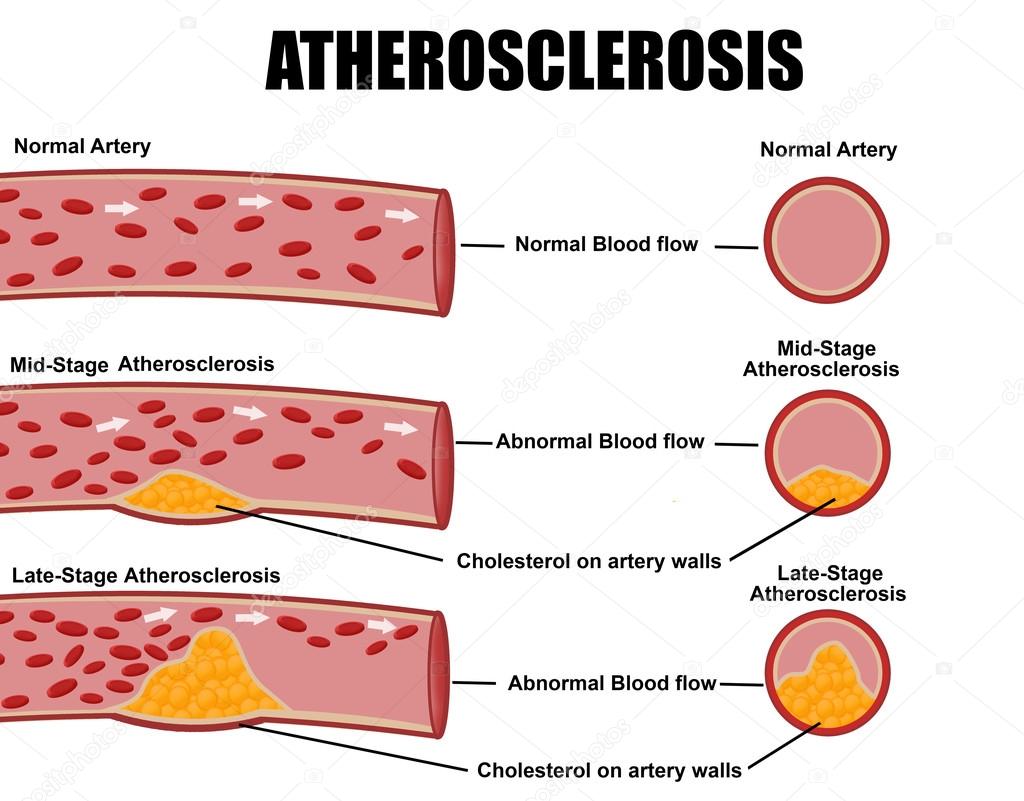 There’s also a very slight risk of infection at the puncture site.
There’s also a very slight risk of infection at the puncture site.
The reliability of home cholesterol tests can vary between brands. The reliability can also be affected by how well you follow the test instructions.
In a 2017 study, researchers found that two point-of-care lipid testing devices were relatively accurate and operated within the industry standards. This means that:
- HDL levels were within 12 percent of the result of lab testing.
- Total cholesterol was within 10 percent.
- Triglyceride levels were within 15 percent.
In a 2021 study, researchers analyzed the performance of five types of commercially available home cholesterol tests. The researchers found that the Roche Accutrend Plus test had an excellent performance, but that several of the other products had poor accuracy and diagnostic ability.
The researchers concluded that better regulation and standardization are needed for at-home cholesterol tests.
For the most reliable results, laboratory testing may still be the best option, especially if you have risk factors for high cholesterol.
A cholesterol test can measure levels of cholesterol and fats in your blood to assess your risk of cardiovascular disease.
Most healthy adults should get their cholesterol levels tested at least every 5 years. People with a family history or at an increased risk of high cholesterol should get tested more often.
If you do have high cholesterol, your doctor can work with you to create a treatment plan to get your cholesterol levels into a healthy range.
Treatment for high cholesterol usually consists of some combination of dietary changes, increased exercise, smoking cessation, and medication.
How cholesterol is indicated in a blood test
We know that cholesterol is one of the main culprits of atherosclerosis and its complications: heart attack and stroke. Is it always necessary to sound the alarm when blood cholesterol is elevated?
Doctor’s consultation
You can get the consultation of the necessary specialist online in the Doctis application
Laboratory
You can undergo a comprehensive examination of all major body systems
We remind you that on our portal you can find Dr.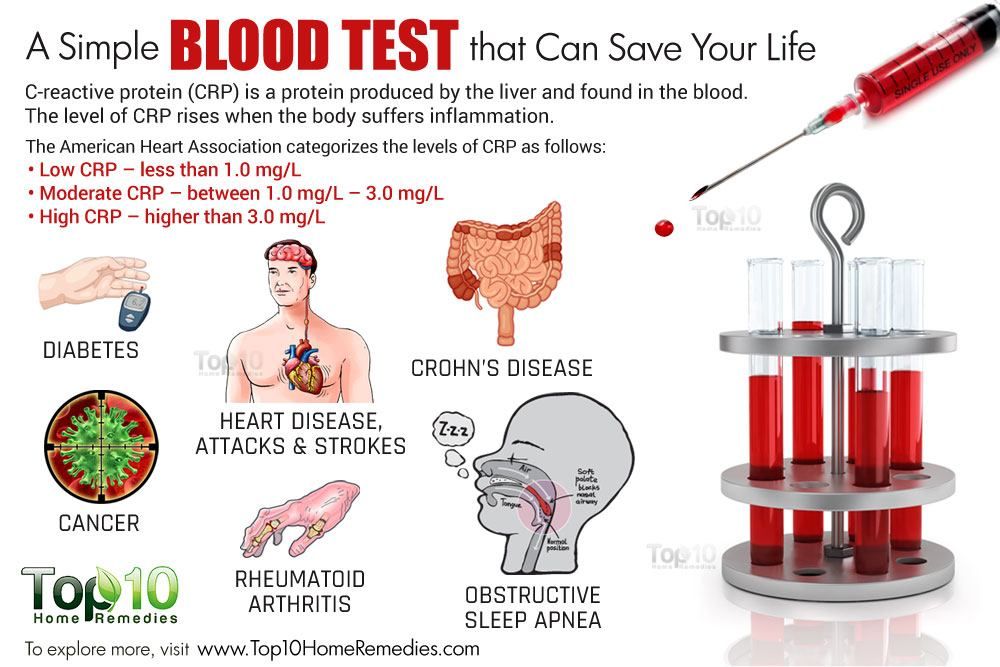 Fedorov’s answers to questions about how
Fedorov’s answers to questions about how
correctly decipher indicators in general analyzes
urine and blood, biochemical
blood test, analysis
blood for lipid profile, analysis
urinary sediment. And also you can find out what some changes in the electrocardiogram mean.
- Cholesterol – friend or foe?
- Good and bad cholesterol
- What are triglycerides?
- Norm of cholesterol in the blood
- Atherogenic coefficient
Why is cholesterol considered the number one enemy of our blood vessels?
In fact, cholesterol is more of a friend than an enemy. After all, imagine life without this “builder”, which is part of
the cell wall of all our organs and tissues is impossible. In addition to the frame function, it has at least
important: the main role in the production of bile acids, vitamin D, most hormones (cortisol, aldosterone,
testosterone, estrogens, progesterone, etc. ). However, a number
). However, a number
studies conducted from the 60s of the last century to the present day, convincingly proved the connection
hypercholesterolemia (increased cholesterol levels) and dyslipidemia (disturbances in the ratio of lipids in the blood
due to the excess of some and a decrease in the concentration of others) with the risk of developing atherosclerosis
vessels.
Vascular atherosclerosis is caused by the deposition of cholesterol in the inner wall
vessels with the formation of atherosclerotic plaques, causing a violation of the blood supply to the heart (angina pectoris,
myocardial infarction), brain (ischemic stroke), lower extremities (intermittent claudication, gangrene) and others
organs.
Why is good and bad cholesterol distinguished?
Further research has shown that an increase in total cholesterol does not always indicate an increase in
the risk of atherosclerosis. The fact is that cholesterol is not present in the blood in a free form, it is bound
with carriers – lipoproteins. To peripheral organs and tissues (including
To peripheral organs and tissues (including
vascular wall) it is carried by low and very low density lipoproteins (LDL and VLDL), and from tissues
high-density lipoproteins (HDL) are transported to the liver. It turned out that a high level of general
cholesterol due to LDL and VLDL is associated with an increased risk of atherosclerosis, and an increase due to
HDL, on the contrary, helps to reduce this risk. And if the first situation requires lowering cholesterol levels and drug
treatment, the second one does not need correction.
Cholesterol in the composition of LDL and VLDL is called “bad”, and in the composition
HDL is “good”. These cholesterol transporters are designated separately (LDL and HDL) in the expanded
a blood test for cholesterol, which is called a “lipid profile”.
What are triglycerides? What does an increase in their level in the blood indicate?
Triglycerides, along with cholesterol, are another “fat depot” of our body. But unlike
But unlike
from the latter, they are not produced in the liver, but are completely supplied with food. chief
way from meat and dairy products with high fat content.
Triglyceride levels fluctuate throughout the day: after the first meal, their concentration
in the blood increases rapidly and remains at this level for 9-12 hours. Therefore, a blood test for lipid
the profile should be taken no earlier than 12 hours after a meal.
The main evidence of an increase in triglyceride levels is an unhealthy diet with excess
animal fats. In addition, triglyceride levels increase with diabetes mellitus and impaired glucose tolerance,
fatty hepatosis and cirrhosis of the liver, pathology of the gallbladder and bile ducts, with some other
diseases, as well as during pregnancy.
What level of total cholesterol can be considered normal?
Norms of cholesterol in the blood depend on age. In a newborn, its level does not exceed 3
mmol/l. Later, gender differences appear in cholesterol levels: in men in the young and middle
Later, gender differences appear in cholesterol levels: in men in the young and middle
With age, its level rises faster than in women, and in old age, on the contrary, it decreases. Representatives
of the weaker sex, the level of cholesterol before menopause increases rather slowly, but after the onset
the menopause quite quickly “catches up” with the male concentration and can exceed it. This is due to the impact
sex hormones – androgens increase cholesterol levels, and estrogens, on the contrary,
decrease.
The average age norm of cholesterol in the blood is considered to be 5.2 mmol/l. If
cholesterol level is increased more than 6.22 mmol / l, the risk of developing cardiovascular diseases is significantly increased
diseases.
The level in the “corridor” from 5.2 to 6.22 mmol / l is considered intermediate, to assess possible
risks in this case, pay attention to the ratio of “bad” and “good”
cholesterol, the concentration of triglycerides, calculate the coefficient of atherogenicity.
What is the coefficient of atherogenicity?
This indicator allows you to visually assess the risk of developing cardiovascular diseases. Normal coefficient
atherogenicity is 2−3. With an increase from 3 to 4, the risk of developing atherosclerosis and related
with it, cardiovascular diseases are assessed as moderate, more than 4 – high. In some
cases, the atherogenic coefficient exceeds 7 – then they speak of an extremely high risk of cardiovascular
diseases.
Know your cholesterol level and periodically take a blood test for cholesterol
It is considered in our days a good form and a sign of an attentive attitude to health.
Fortunately, today many even know how cholesterol is indicated in a biochemical blood test (CHOL). But,
as practice shows, one analysis for total cholesterol is enough only when
indicator is within the normal range. If we are talking about even a slight increase, for
a full assessment of the situation and the choice of the correct treatment tactics, it is necessary to take a full analysis for lipid
a profile that includes, in addition to total cholesterol, HDL, LDL and VLDL cholesterol, as well as triglycerides.
This comprehensive analysis makes it possible to calculate the atherogenic index, which is an important criterion for risk assessment.
atherosclerosis.
If you have any questions, you can ask your general practitioner,
using the Doctis application.
The author of the article: Aleksey Yurievich Fedorov
Pass a biochemical blood test for HDL alpha-cholesterol in the Optimum laboratory in Sochi (Adler)
- Home
- Analyzes and prices
- HDL-Cholesterol
More about the doctor
Due date
(working days):
up to 1 day.
Price:
239 ₽ *
* Taking biomaterial is paid separately
Alpha-cholesterol test is a laboratory blood test performed to determine the quantitative ratio of HDL to cholesterol, which allows, in combination with other tests, to assess the state of the liver, the risk of atherosclerosis.
Preparation for the test:
- Blood donation in the morning from 8 am to 11 am on an empty stomach
- Fasting period before analysis should be at least 8 and no more than 14 hours
900 02 Biomaterial type: venous blood
Synonyms (rus): High-density lipoproteins, α-cholesterol, HDL, alpha-cholesterol, cholesterol, HDL cholesterol
Research methods: spectrophotometry and colorimetry
Measurement units: mmol/l
Deadlines: 1 day
Analysis for alpha-cholesterol in, what is it?
Prescribed by a general practitioner or cardiologist in the following cases:
- Symptoms of atherosclerosis, chest pain and other symptoms IHD ;
- Prophylactic investigation, especially when there are additional risks of developing cholesterol deposits, cardiac ischemia;
- Some diseases of the kidneys, endocrine system ( cirrhosis , glomerulonephritis, chronic hepatitis , diabetes mellitus and others).

It is a blood sampling from a vein, after which the content of α-cholesterol (HDL) in the serum is determined.
Deciphering the analysis for alpha-cholesterol
The main function of α-cholesterol is the transfer of cholesterol from organs and tissues to the liver, where it is metabolized or deposited. A decrease in its level increases the concentration of cholesterol and contributes to its deposition. The concentration of alpha-cholesterol, which is considered normal, depends on gender, age and individual characteristics, it is 0.7-2.28 millimoles per liter.
Decreased alpha-cholesterol (high-density lipid) may mean:
- diseases of the bile ducts and bladder, liver;
- certain hereditary diseases;
- chronic kidney disease;
- endocrinological disorders;
- long-term use of steroid hormonal preparations;
- high risk of atherosclerosis.
High levels of α-cholesterol occur at:
- pregnancy;
- alcoholism;
- certain liver pathologies;
- treatment with statins and drugs of other groups;
- frequent high-intensity aerobic exercise.

Alpha-cholesterol-HDL level in the blood
HDL are microscopic particles produced by the liver (the so-called “good cholesterol”), the main task of which is to cleanse the vessels of toxins and toxins.
Together with LDL, HDL ensures normal cholesterol levels in the body. The main task of HDL is to combine, move residual cholesterol to the liver from extrahepatic cells for the purpose of their subsequent excretion with bile. Normal values of HDL in the blood prevent the development of atherosclerosis.
The titers of alpha-lipoprotein and HDL assess the risk of damage to arterial vessels. Patients with high HDL concentrations are more likely not to have atherosclerosis.
Low levels of HDL indicate a high risk of early development of diseases of the cardiovascular system, atherosclerosis against the background of insulin resistance, hypertriglyceridemia, type 2 diabetes, Reaven syndrome.
Sometimes the amount of HDL can increase or decrease.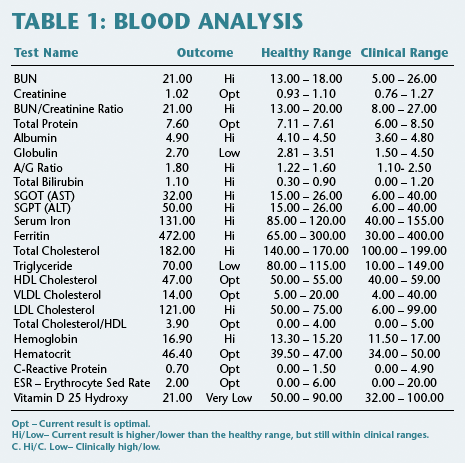 Reflecting the standard changes in cholesterol in the blood, this feature is called biological variation. A single analysis is not reliable for determining the “necessary” cholesterol level, therefore, patients are advised to retake the test for HDL after 30-90 days.
Reflecting the standard changes in cholesterol in the blood, this feature is called biological variation. A single analysis is not reliable for determining the “necessary” cholesterol level, therefore, patients are advised to retake the test for HDL after 30-90 days.
In addition to the fact that cholesterol is produced by the liver, it additionally enters the human body with food, in particular, when eating dairy, meat food and contributes to the formation of cell membranes of various tissues and organs. Without the participation of cholesterol, hormonal activity is impossible, which contributes to the functions of procreation, development, and growth of the body. It is no less important in the formation of bile acid, due to which fats are absorbed into the intestine.
HDL is insoluble in water, therefore, in order to “move” inside the body, it “masquerades” as a shell of apolipoproteins. The resulting interaction of apolipoproteins with cholesterol is called lipoprotein. Three types of lipoproteins move in the human body. They are characterized by a difference in the ratio of constituent parts, among which:
Three types of lipoproteins move in the human body. They are characterized by a difference in the ratio of constituent parts, among which:
- LDL low density;
- Very low density VLDL;
- High Density HDL.
The structure of HDL is dominated by the protein part and cholesterol. When a person has a genetic predisposition to increase cholesterol in the blood, or eats mainly fatty foods, its amount in the body can grow to a critical limit, when the excess is not completely excreted by HDL.
Bad cholesterol gradually clogs the vessels with plaques that prevent blood circulation through them, as a result of which the vessels become stiff (atherosclerosis occurs). This condition increases the risk of heart disease (stroke, ischemia, heart attack).
Elevated concentrations of HDL cholesterol promote the removal of excess cholesterol fractions from the body, significantly reducing the risk of plaque formation in arterial vessels.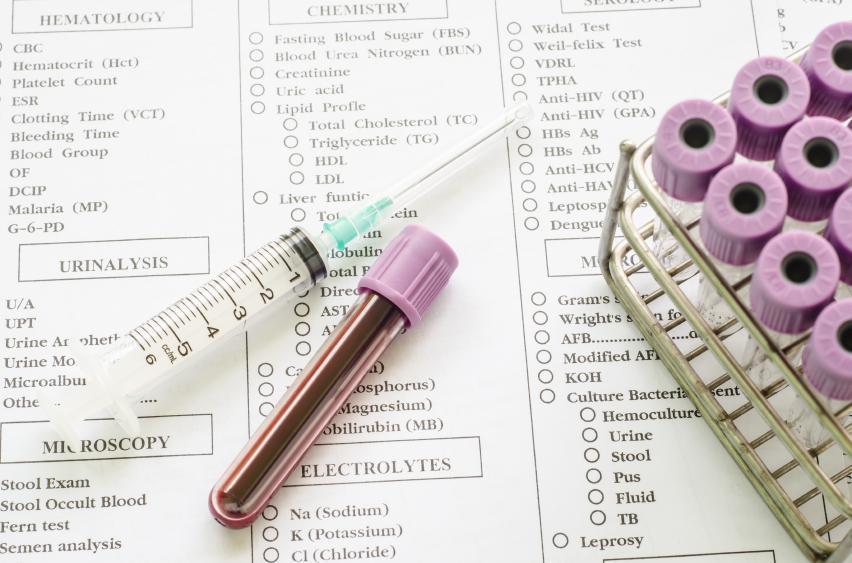 A decrease in HDL cholesterol titer within normal values of the concentration of total cholesterol, as well as all its fractions, provokes the development of atherosclerosis.
A decrease in HDL cholesterol titer within normal values of the concentration of total cholesterol, as well as all its fractions, provokes the development of atherosclerosis.
What is it used for?
The study is informative for:
- Assessment of the risk of possible development of cardiovascular diseases, atherosclerosis.
- Monitoring the effectiveness of treatment with a low-fat diet.
What determines the result of the analysis?
The decrease in HDL is affected by:
- corticosteroid, anabolic steroid drugs, androgens;
- stressful situations;
- previous illnesses (at least 6 weeks must elapse from the moment of recovery to passing the test).
A significant increase in the concentration of HDL in the blood is possible against the background of:
- pregnancy (lipidogram study is recommended after 6 weeks from the date of delivery),
- taking insulin, cholestyramine, phenobarbital, estrogens, statins, fibrates, cholestyramine.


 VLDL is often not mentioned on cholesterol tests because it’s not directly measured. Instead, VLDL levels are calculated by assuming VLDL levels are 20 percent of your triglyceride levels. Your VLDL levels are not used to determine treatment for elevated cholesterol.
VLDL is often not mentioned on cholesterol tests because it’s not directly measured. Instead, VLDL levels are calculated by assuming VLDL levels are 20 percent of your triglyceride levels. Your VLDL levels are not used to determine treatment for elevated cholesterol.
 LDL and VLDL are both calculated values based on the the measurement of your total cholesterol, HDL, and triglycerides.
LDL and VLDL are both calculated values based on the the measurement of your total cholesterol, HDL, and triglycerides.

